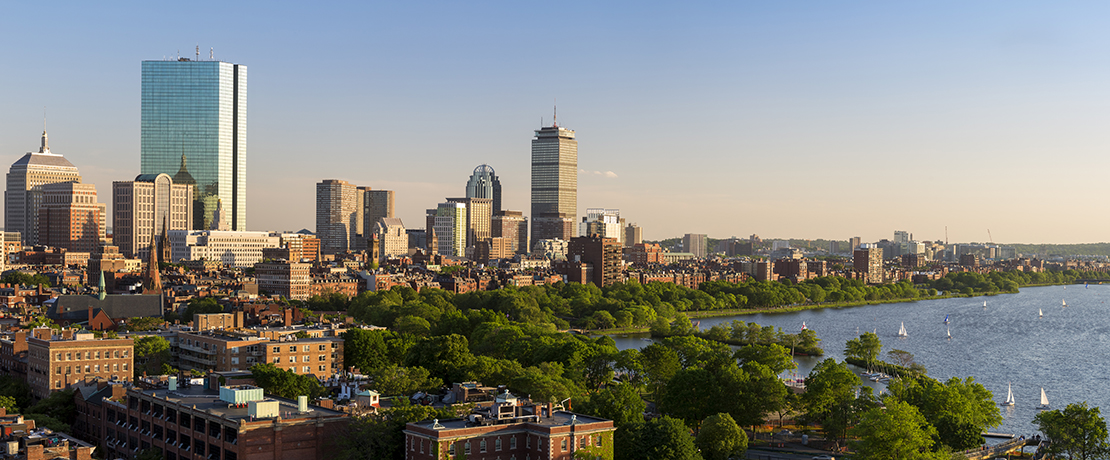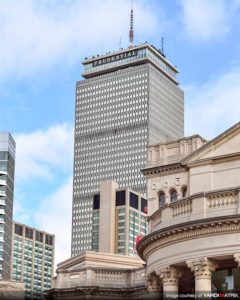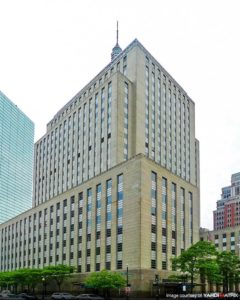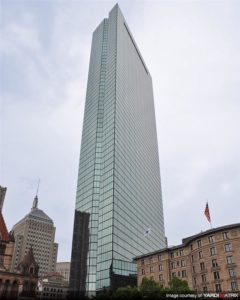Boston, America’s cradle of liberty, has always met the challenge of the times and risen to the forefront of innovation, throughout its history. Boston has grown to be one of the strongest economies in the country by reclaiming and reinventing itself over and over again. Nowhere is that innovative spirit more apparent than in the history of Boston’s buildings.
Follow us as we trace the rise of the city’s silhouette against the sky, and watch our 3D mapping video of Downtown Boston’s skyline evolution.
1630-1800: Boston Rises from the Waters of the Charles River
From its foundation in the 1600s through the late 1800s, Boston’s population grew from 25,000 to over 560,000, and the city’s surface area tripled. Industrious land reclamation created the Back Bay and the Great, South, and West Coves. Moreover, original Boston annexed adjacent towns like South Boston, Roxbury, Charlestown and Hyde Park. The great builders and inventors that Boston harbored and inspired never fell behind the times—the city was home to the country’s first public school, first subway system, and first public park. As commerce shifted from water to land during the 1800s, Bostonians complemented their transport network of small rivers with a network of railroads, which furthered the progress of regional industry. Business was booming and it required more commercial space.
Building Up to the Future–Custom House Tower Breaks the Code
Boston’s pre-1928 building code restricted commercial buildings to a height of 125 feet. This dictated the aspect and scale of the city’s historic Custom House District: buildings were six to eleven stories tall, with expansive floor plates and some encompassing entire city blocks. But progress meant transitioning to taller structures and the first one to break the code was the Custom House Tower. The new addition rose to 496 feet in order to accommodate much needed additional office space for revenue agents, and reigned as Boston’s tallest building for almost 50 years. Today, the Boston Financial District is a mix of prominent 19th century buildings interspersed with 20th century skyscrapers.
The 20th Century Boom that Built New Boston
The Boston Redevelopment Authority was established in the mid-1950s and it watched over the Great Urban Renewal. Intensive development and redevelopment carried out well into the late 1980s helped Boston recover from nearly three decades of economic downturn and had a significant impact on the city skyline, shifting focus from Downtown Boston to the Back Bay.
This building boom yielded projects like the Prudential Center, a 23-acre complex of hotels, retail, green space and imposing office buildings, all developed on the site of an old switch yard for the Boston and Albany Railroad.
The Back Bay now boasted Boston’s tallest building, which was designed for Prudential Insurance. Upon completion in 1964, the Prudential Tower was the tallest building in the world outside of NYC, and it dwarfed the Old John Hancock Building and its weather beacon.
This, in turn, prompted a competition between Prudential and the John Hancock Insurance Co., which led to the construction of the even taller New John Hancock Building. Referred to as 200 Clarendon since the John Hancock Financial lease expired in 2015, the tower continues to be New England’s tallest. Completed in the mid-1970s, this Henry Cobb design challenged the architectural know-how of the time. Unforeseen architectural flaws uncovered shortly after completion led to widespread adaptation of existing building codes, preparing the cityscape for future skyline standouts. Subsequently constructed high-rises like the International Place towers, One Financial Center, 125 High Street, 111 Huntington, and the Millennium Tower stand as witnesses to Boston’s growth as a financial capital.
2017 Boston Blazing a Trail into the Digital Economy
Almost 390 years into its story, Boston is yet again emerging as a powerhouse through a transforming economy, according to research conducted by the U.S. Chamber of Commerce, Free Enterprise, and the global startup incubator 1776. The “Innovation that Matters” report analyzed 25 major U.S. cities in terms of their readiness to take on the unfolding shift to a digital economy and has put Boston in the lead for the second year in a row. “The Hub” outranked the Bay Area and Silicon Valley in startup density and access to capital and scored high for talent pool, community cohesion, and the overall quality of life of its residents.
Boston’s businesses and institutions rank among the country’s best for environmental sustainability and investment. The American Council for an Energy-Efficient Economy (ACEEE) has repeatedly designated Boston as the most energy-efficient out of the 34 most populous U.S. cities, for the municipality’s efforts to smartly reduce energy use in the following areas: buildings, transportation services, energy and water utility, local government operations, and community-wide initiatives.
















